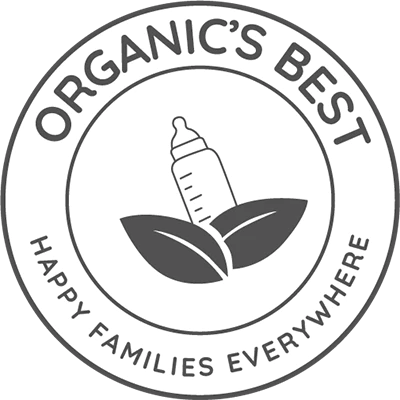Click to Get 2 FREE Boxes/Cans
Only New Customers! Order 12 Boxes of Formula or More to Get 2 Extra Boxes/Cans for Free With Your First Order
BABY FORMULA
Offering new parents top-quality European infant formula from renowned brands like HiPP, Holle, Kendamil, and more. If you’re uncertain about which product to choose, our Formula Finder can help you make the best decision for your baby.
Baby Food
Offering new parents a premium selection of European baby foods, including jars, pouches, cereals, and snacks from esteemed brands like HiPP and Holle.
How to Stop Milk Production if Not Breastfeeding
by Agustina Fernandez May 01, 2024 11 min read

Table of contents
- How to Dry up Breast Milk: 10 Tricks to Make it Easier
- How Long Does it Take for Breast Milk to Dry Up?
- How Long Before the Breast Milk Goes Away?
- Things to Watch for When Decreasing Your Breast Milk Supply
- Can Stopping Breastfeeding Cause Depression?
- Conclusion on How to Stop Breast Milk Production
Our bodies can do some pretty amazing things, I think we can all agree that moms producing nutritive milk for little ones is an astounding accomplishment. Health organizations everywhere agree that breast milk provides the optimal nutrition for babies. Given this fact, the World Health Organization recommends exclusively breastfeeding babies until 6 months of age and encourages mothers to continue breastfeeding for as long as possible.
While that may be the perfect scenario, life doesn't always beat to the drum of perfection. Breastfeeding looks different for everyone and there's a wealth of reasons why you may wish to stop your milk production. As far as how to stop milk production if not breastfeeding; once you stop, your milk supply will naturally dry up on its own gradually.
But in the meantime, dealing with breast engorgement and struggling to dry up breast milk faster is not a lot of fun. The good news is that there are many things you can do to aid you on your journey to stop breastfeeding, and we're here to give you the low-down on how to dry up breast milk in hopes that your breast milk supply will slow down!
So, keep reading for tips on how to dry up milk supply and answers to: how long does it take for milk to dry up?
P.S. We like to keep things safe, so if you're wondering how to stop breastfeeding, be sure to seek the advice of a lactation expert or medical professional before attempting to prevent or suppress your milk production.
How to Dry up Breast Milk: 10 Tricks to Make it Easier
As far a tips to stop breastfeeding go, the key strategy for stopping milk production is to ensure that:
-
You aren't expressing more milk than required and,
-
Your breasts are well supported.
These are important practices to gradually decrease your breast milk supply and give you some added comfort on the way. As you may discover, one of the most difficult parts of suppressing breast milk is coping with the pain that your breasts most likely feel. In recognition of that, these tips for stopping milk production aren't only here to help you stop producing milk but also to make you feel more comfortable while drying up breast milk.
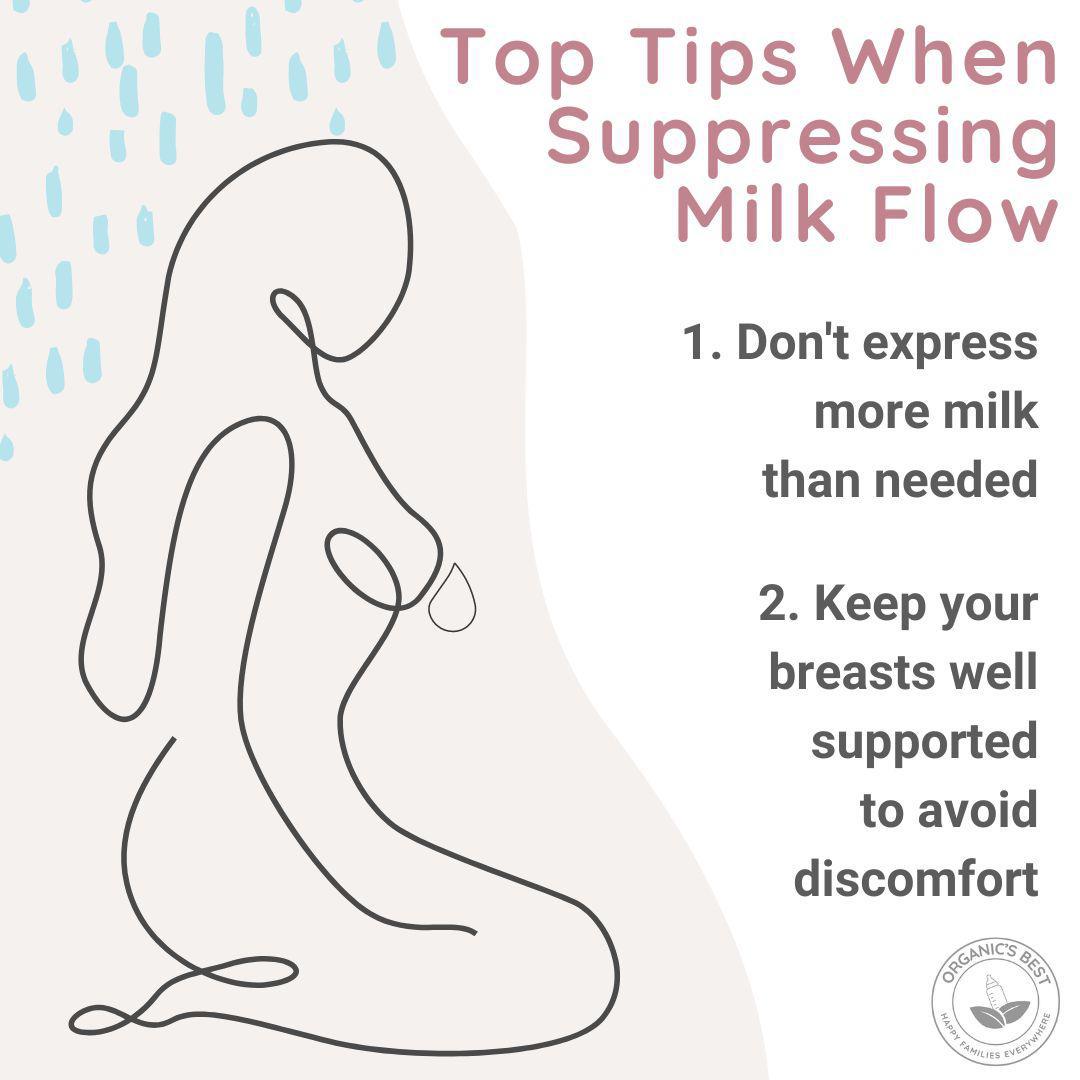
1. Wear a supportive bra when ending breast feeding 👙
You'll want a cozy bra to support you finding ways to stop breastfeeding more comfortably. The ache of full or swollen breasts is like no other, when all you want to do is hold the girls up, a bra will be your best friend! Giving your breasts firm support is super, but be wary of binding.
Binding your breasts is vintage medical advice that's unlikely to come back in fashion, and for good reason. Not only can it result in even more pain for your breasts, but it can also be a danger to your health, leading to issues such as blocked milk ducts or mastitis.
2. Avoid hot showers to dry up milk supply 🚿
There are few things in the world quite as peaceful and calming as a nice hot shower. Refreshing, soothing, and warm, who wouldn't want that? Well, if you're one of the many women who find that the heat of a shower elicits milk ejection, then you'll probably want to skip hot water when trying to stop your breast milk production.
However, if you find it unrealistic to abstain from the heat altogether, you can also turn your back to the showerhead or even put a towel over your breasts for added cover! This will help promote your milk supply decreasing.
3. When drying up milk supply, resist the urge to pinch! 🤏
If you're totally fed up with the process of lactation suppression and want to give your nipple a little squeeze to see if your milk has finally dried up, don't do it!
Trust us, we get it, but stimulating your nipples or your breasts can actually put you on track to produce small amounts of milk for even longer. The best way to stop breastfeeding and check if your milk supply is drying up is if you feel your breasts starting to become softer. Softer breasts indicate that your milk production is decreasing!
4. Pay attention to your diet when looking for ways to dry up breast milk 🍽️
Have you ever heard of lactogenic foods before? Well, it's a fancy term for describing foods that can stimulate more milk production in your body which are popular for those trying to increase their low milk supply. While it may sound like magic ✨ it's just nature’s fine work!
Of course, if you're looking to suppress lactation, you'll want to steer clear of these foods altogether. These include oats, garlic, leafy greens, and reddish veggies, among a host of other things worthy of spending some time reading up on when researching how to stop producing milk.
5. Experience the relief of cabbage leaves 🥬
If you're wondering what green cabbage is doing on a list of tips for suppressing lactation, we totally understand your confusion. It may seem kooky but several peer-reviewed studies have boasted that green cabbage leaves placed atop your chest can help to relieve the pain and hardness of engorged breasts and may reduce swelling. Many moms swear by cabbage for breastfeeding pain.
Researchers have even found that cabbage leaves, compared to ice packs, are equally effective at reducing pain. But the great thing about cabbage leaves is that they fit perfectly under bra cups. As it turns out, frozen vegetables aren't just for eating! So, while you can't use cabbage to dry up breast milk, it will at least ease some of your pain!
Place your chilled or frozen cabbage leaves between your bra and your breasts. Once they begin to wilt, or after roughly 2 hours, feel free to swap them out for some more cool and comforting cabbage!
6. Birth control to help your milk stop 💊
Birth control is prescribed by doctors to women for a cornucopia of different reasons. But what do birth control and milk supply have to do with one another? Well, your healthcare provider may prescribe you birth control with estrogen for off-label use (i.e. for use other than contraception).
This is because estrogen has been known, in some cases, to help dry up breast milk supply. However, the effects of estrogen on lactation suppression aren't universal or well documented yet, so more research is needed in this field.
And if you're wondering how to dry up breast milk naturally, this option is probably not ideal for you. Be sure to seek professional medical advice before trying this method!
7. Wanna dry-up breast milk? Say hello to herbs! 🌿
In many ways, herbs can be seen as super plants that, when used correctly, bestow their medicinal properties upon us. Certain herbs have even demonstrated success in reducing women's supply of breast milk.
Drinking herbal teas, such as a nice warm cuppa sage tea, can be not only tasty but also a great way to support your lactation suppression process. Other herbs with the potential to help your milk dry up include peppermint oil, chasteberry, jasmine, and parsley.
It's important to be aware that while herbs are often well-tolerated by adults, they can be potentially dangerous for babies. If you're interested in any of the herbal remedies we mention here, talk to your doctor or a lactation consultant first.
8. Pain relief medication ⚕️
If cold packs, cold compresses, or cabbage leaves aren't doing the trick for you and your breasts feel sore still, it may be time to talk to a medical professional about what medication you can take to safely and effectively relieve pain as you await a milk supply decrease.
9. Using Sudafed to dry up milk 😷
Suda-what now? Sudafed or pseudoephedrine is a cold medicine though one study also found it to be very effective when used off-label to dry up breast milk. While this medication is often available over the counter, you should always speak to your doctor before taking medication while breastfeeding and before using it off-label to stop breast milk production.
10. Vitamin B for drying up breast milk 💓
If you're in the earliest stages of your lactation suppression process and have actually yet to begin producing breast milk, vitamin B may be your new sidekick. Some research suggests that prior to building up a milk supply, taking vitamin B may work to limit lactation.
Although vitamin B is generally safe for use, you should always speak with a lactation consultant or healthcare provider before using it to prevent milk production.

How Long Does it Take for Breast Milk to Dry Up?
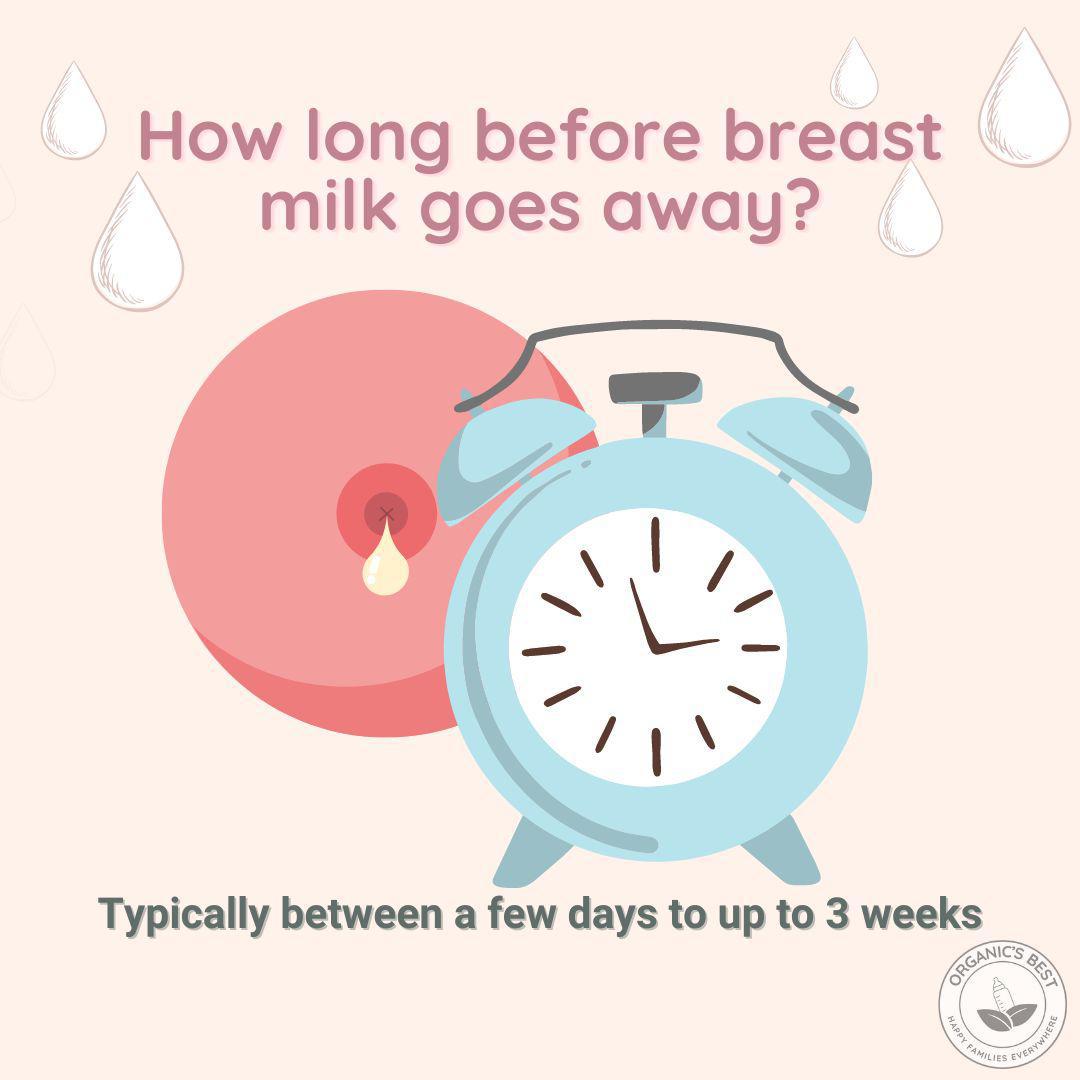
If you're weaning from breastfeeding, your number one question is likely: how long does it take for milk to dry up if not breastfeeding?
If you've completely stopped breastfeeding or pumping, your body will usually take approximately a week to 10 days to return to its usual non-lactating state. If you've been breastfeeding your baby and pumping but are only just beginning to wean your baby, your milk supply will typically decrease in around 3 weeks.
These are general time frames, but the reality is women have different experiences of having their breast milk supply drop, which we'll cover next.
You may also be interested in How to Transition From Breastmilk to Formula?
How Long Before the Breast Milk Goes Away?
While it isn't an exact science to figure out 'how long does it take for breast milk to dry up', a good rule of thumb is that the longer you've been nursing, the longer it will take to be able to dry up breast milk. But take that with a grain of salt as it really depends on several factors, including...
🍼 Your stage of pregnancy, if you've yet to give birth.
🍼 How much your nipples are touched (remember, this encourages more milk production).
🍼 If you've had another pregnancy.
🍼 How much milk you're still expressing.
🍼 If you've begun the weaning process, how much milk you were making and your baby's age when you began.
While some mothers go weeks before their milk supply completely dissipates, other moms are lucky enough to dry up in just a few days. It's also not uncommon for a few drops of milk to be expressed even months later.
This is to say that if you want to dry up your breast milk, remember that the journey is like a box of chocolates. You never know what you’re gonna get, so your path will almost certainly look different from other mums out there.
Things to Watch for When Decreasing Your Breast Milk Supply
Many others experience these three things when stopping breastfeeding; here is what you know to be aware of on this journey. And remember, your allied health professional are there to help you tackle and troubles you're having.
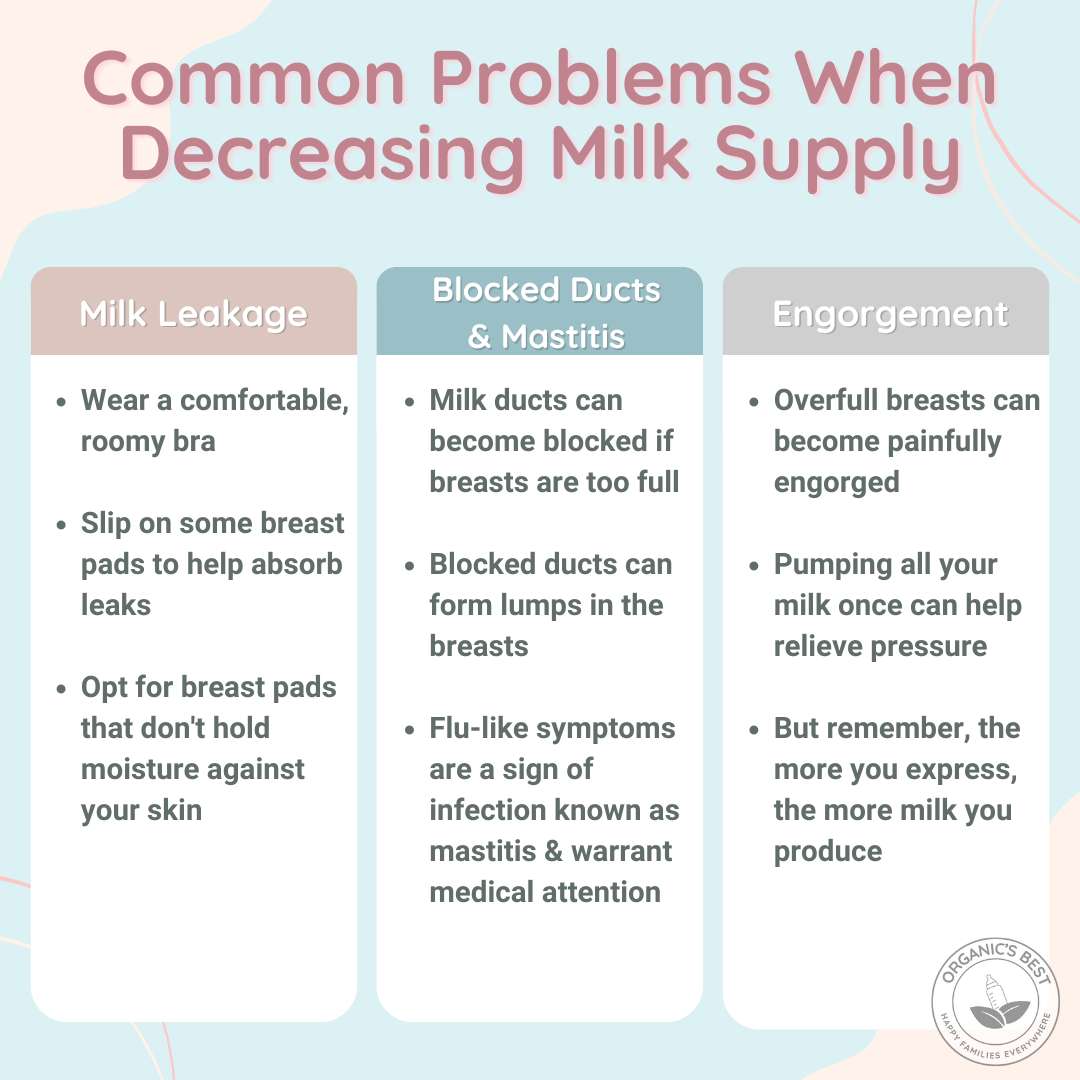
1. Milk leakage💧
This can be a pain to deal with. You just donned your favorite top and were ready to face the day ahead, only to look down and notice wet spots on your breasts. Well, back to the drawing board for what to wear today…
But don't fret; it's a common issue that most mothers face, and there are a few effective tricks to help deal with it! Break out one of your roomier bras and slip on some breast pads to help absorb any leaks.
However, it's best to avoid the breast pads that hold moisture against your skin. And, if you prefer to crawl into bed with your bra at the end of the day, make sure that it doesn't dig into you while you lay down; otherwise, it could result in a blocked duct or two.
2. Blocked ducts and mastitis 🤒
Wondering how to dry up breast milk without getting mastitis? Well, these are risks that you could run into if your breasts remain full for an extended period of time. If the ducts that allow milk to flow to your nipples become blocked, lumps in the breast begin to form and cause soreness.
This may also be accompanied by other symptoms, such as breast tissue heat and redness, inflammation, and flu-like symptoms, such as chills or body aches. If you develop these flu-like symptoms, it means that you've likely developed a breast infection called mastitis.
It's important to see your doctor when this happens or if your milk ducts do not become unblocked after a couple of days. If this medical condition is left untreated, you may develop breast abscesses, so it's imperative to seek medical attention ASAP.
3. Breast engorgement 🤦♀️
It takes some time for your body to catch on to the fact that you won't be breastfeeding your baby any longer. In the meantime, you may have to deal with engorged breasts from being overfilled with milk and the discomfort that can come with it.
To combat the pain, some women may benefit from pumping all the milk from their breasts just once to relieve the pressure. From then onwards, this may help prevent pressure from building up so strongly again. However, keep in mind that the more times you express, the more breast milk you will produce, so factor this in while calculating 'how long does it take to dry up breast milk'.
Can Stopping Breastfeeding Cause Depression?
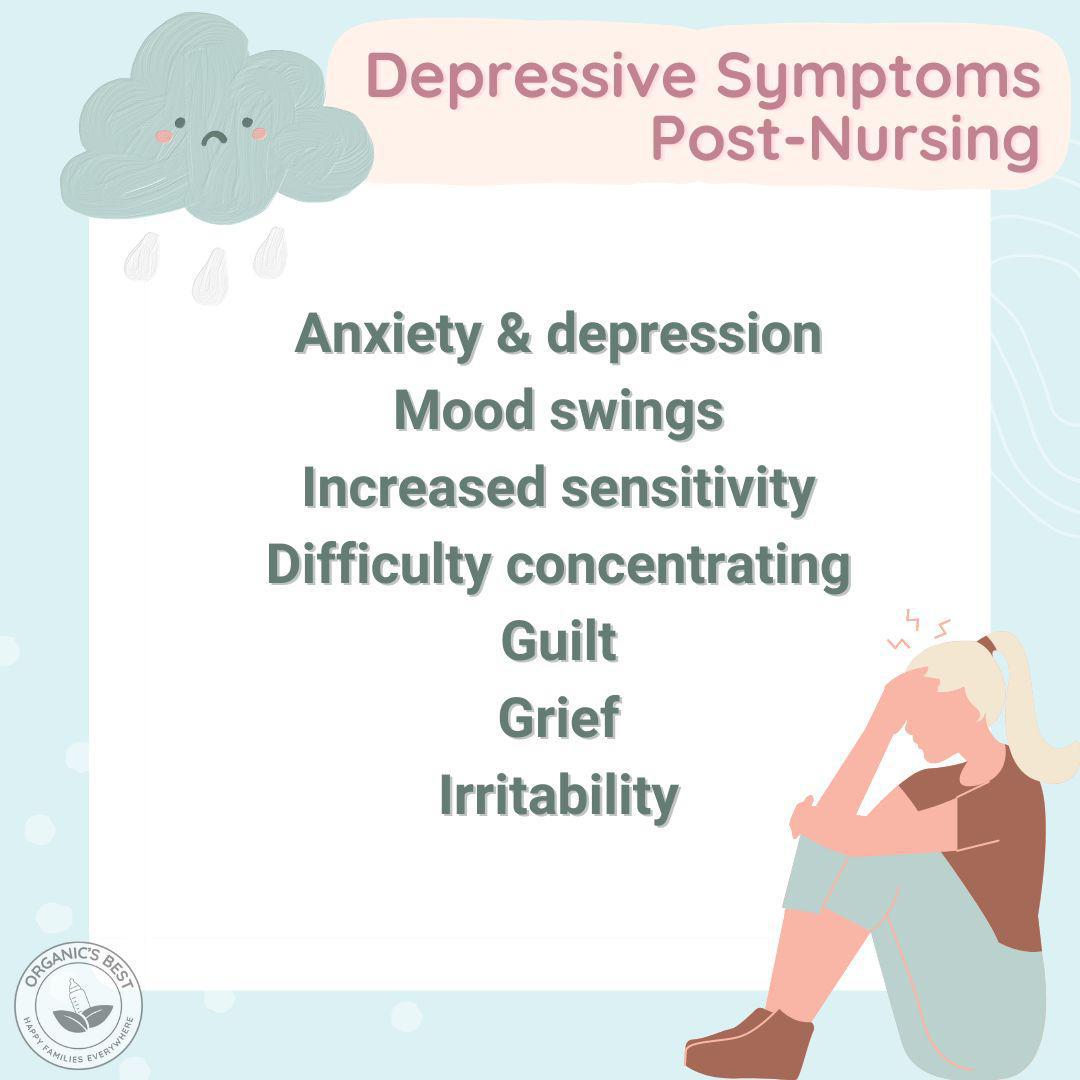
The connection that you build with your baby through breastfeeding is sacred and special. It's no wonder that some rather hefty emotions can arise when you start seeing signs your milk supply is decreasing, even if that is your intent. These complex feelings don't just stem from adjusting to the difficult change of weaning breastfeeding; your hormones undergo a great deal of change as well.
While breastfeeding, your body releases 'happy hormones’ (oxytocin and prolactin). After you cease breastfeeding your baby, the levels of these hormones drop significantly, which can contribute to a shift in your mood.
If you've ever felt depressed as a result of weaning from breastfeeding, we want you to know that you're not alone! There are extensive reports of mothers suffering bouts of depression following the quest for how to stop producing breast milk. Common symptoms include:
-
Anxiety & depression
-
Guilt
-
Grief
-
Mood swings
-
Increased sensitivity
-
Difficulty concentrating
-
Irritability
While not always attainable, it's usually recommended that you ease into your breastfeeding-weaning schedule gradually rather than suddenly, which may alleviate the burden of sudden hormonal fluctuations. If you feel depressed after weaning, know that you have nothing to feel guilty about, and make sure to reach out to a mental health provider if you feel it's too much for you to manage.
Conclusion on How to Stop Breast Milk Production
Many moms around the world ask the question of how to stop milk production if not breastfeeding? This is a perfectly valid question to ask, no matter your reasoning for ending breast feeding. It's important to remember that drying up your milk is a highly individualistic process, and it can take some time. So try not to rush figuring out how to dry up breast milk fast.
Patience, guidance from a qualified health professional, and self-care are critical components to smoothing out your breast milk suppression journey. Remeber, the best way to dry up breast milk will be an approach tailored to your specific needs with the help of your health care provider. We know it can be tough, but we also know women are tougher. You've got this 🙌!
Sources on how to stop lactation
-
Lactation suppression. Australian Breastfeeding Association. June 2020.
-
How to stop breastfeeding. NHS. March 2, 2020.
-
How to dry up your breast milk supply. WebMD. March 4, 2021.
-
8 great lactogenic foods for increasing milk supply. Nourisher. June 7, 2019.
-
The effectiveness of cabbage leaf application (treatment) on pain and hardness in breast engorgement and its effect on the duration of breastfeeding. JBI Libr Syst Rev. 2012.
-
Application of cabbage leaves compared to gel packs for mothers with breast engorgement: Randomised controlled trial. Int J Nurs Stud. 2017.
-
Infant and young child feeding. World Health Organization. 2021.
Disclaimer:Please be aware that this information is based on general trends in women, and it is not medical advice. Your doctor should be your first source of information and advice when considering how to dry up milk supply. Always consult your pediatrician before making any decisions about your child’s diet or if you notice any changes in your child. Breastfeeding is the best nutrition for your baby because breast milk provides your child with all the essential nutrients they need for growth and development. Please consult your pediatrician if your child requires supplemental feeding. |
Agustina Fernandez
Dr. Agustina Fernandez earned her medical degree from the prestigious Universidad Nacional de Córdoba, Argentina. With a deep-rooted passion for pediatrics, Dr. Fernandez is currently on the path to specializing in children's healthcare. Recently, she has delved into the vital field of infant nutrition. Her research interests include breastfeeding, infant formula, and baby food in little ones’ formative years. Dr. Fernandez's commitment to this area of study underscores her dedication to ensuring the health and well-being of children from their earliest days.
Leave a comment
Comments will be approved before showing up.
Also in Organic Infant Nutrition and Health Blog

Formula Storage: How Long is Formula Good For?
by Agustina Fernandez May 15, 2024 7 min read
Read More
Toxic Baby Formula Ingredients to Watch Out For
by Agustina Fernandez May 13, 2024 8 min read
Read More
Reviewed by Dr. Po-Chang Hsu, MD, MS
-

Dr. Hsu received his medical degree from Tufts University in Boston, Massachusetts, and holds a Master’s of Science degree from both Harvard University and Tufts University.
Dr. Hsu did research in MRI neuroimaging research of fetal brains at Boston Children’s Hospital, an affiliated hospital of Harvard Medical School. Dr. Hsu is currently a full-time medical writer and consultant.
Outside of the medical profession, Dr. Hsu loves to write, learn new languages, and travel
